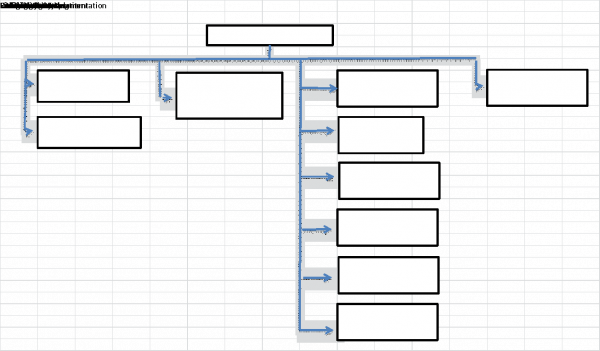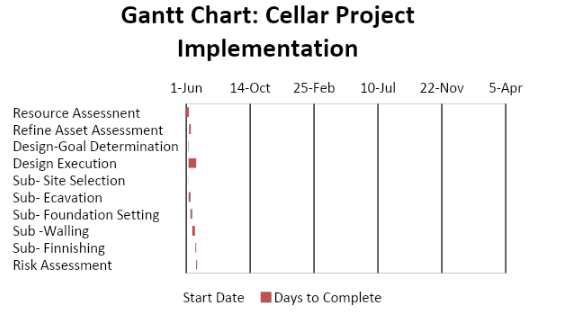Table of Contents
Resources Assessment
The implementation process begins with the collection of the required resources and assessment of the available resources to assist in the determination of the most appropriate implementation strategy (Lock, 2017). The project implementation team needs to start the process by assessing the resources that are readily available in Cambodia before opting for the acquisition of the required resources from without the community to facilitate cost reduction. Importantly, the assessment process processes need to be inclusive and involve consultation with the local residents and partners to ensure the success of the cellar construction project. This process takes at least three weeks to complete.
Refine Asset Assessment
This project implementation process involves the re-evaluation of all the resources and assets identified within the Cambodian community as well as resources obtained from the outside communities to ensure that all the resources required for the cellar project are availed in time and the appropriate quantity. Some of the assets needed for the project include human resource, materials, supplies, and other facilities that need to be allocated at the required time and quantities (Lock, 2017). The refine resource assessment process takes approximately two weeks to allow adequate time for replacement of defective or inadequate resources.
Design-Goal Determination
During this implementation stage, the project team ensures that the cellar design concept is in-line with the overall goal of the project (Kaiser et al. 2015); which is to reduce the need for refrigeration or other food conservation processes that may be expensive, ineffective and environmentally unfriendly. The underground cellar design needs to enable reduction of room temperature during the hot seasons as well as maintain heat during the low seasons to reduce the need for cooling or heating to preserve food and other substances. Importantly, the cellar needs to be well ventilated to reduce the accumulation of carbon dioxide. Last but not least, the design needs to be implemented using the inexpensive and locally available material and does not require electricity for the conservation process. The process is estimated to take three days.
Cellar Design Execution
Once the design is asserted to be in line with the overall goal and objective of the project, the project team can proceed with execution of the project. The process begins with site selection, where the most appropriate location for the cellar is identified and excavated to the required size. The foundation set is done to ensure that the cellar is stable and durable. Finally, the diaphragm walls are constructed using the appropriate materials to ensure control of underground water. Last but not least, the cellar is shelved to allow maximum storage of products and for easy movement. The execution process is estimated to take two months.
Risk Assessment
The final stage of the project implementation process involves monitoring, potential risk identification, and development of appropriate contingency plan. The project implementation team needs to identify and put in place measures to ensure that the risks and potential project development challenges do not stall project schedule. A go-to-plan or alternative is developed to reduce the disruptions that may delay or stop the project (Haimes, 2015).

Work Breakdown Structure

Gantt chart

- Haimes, Y. Y. (2015). Risk modeling, assessment, and management. John Wiley & Sons.
- Kaiser, M. G., El Arbi, F., & Ahlemann, F. (2015). Successful project portfolio management beyond project selection techniques: Understanding the role of structural alignment. International Journal of Project Management, 33(1), 126-139.
- Lock, D. (2017). The essentials of project management. Routledge.
